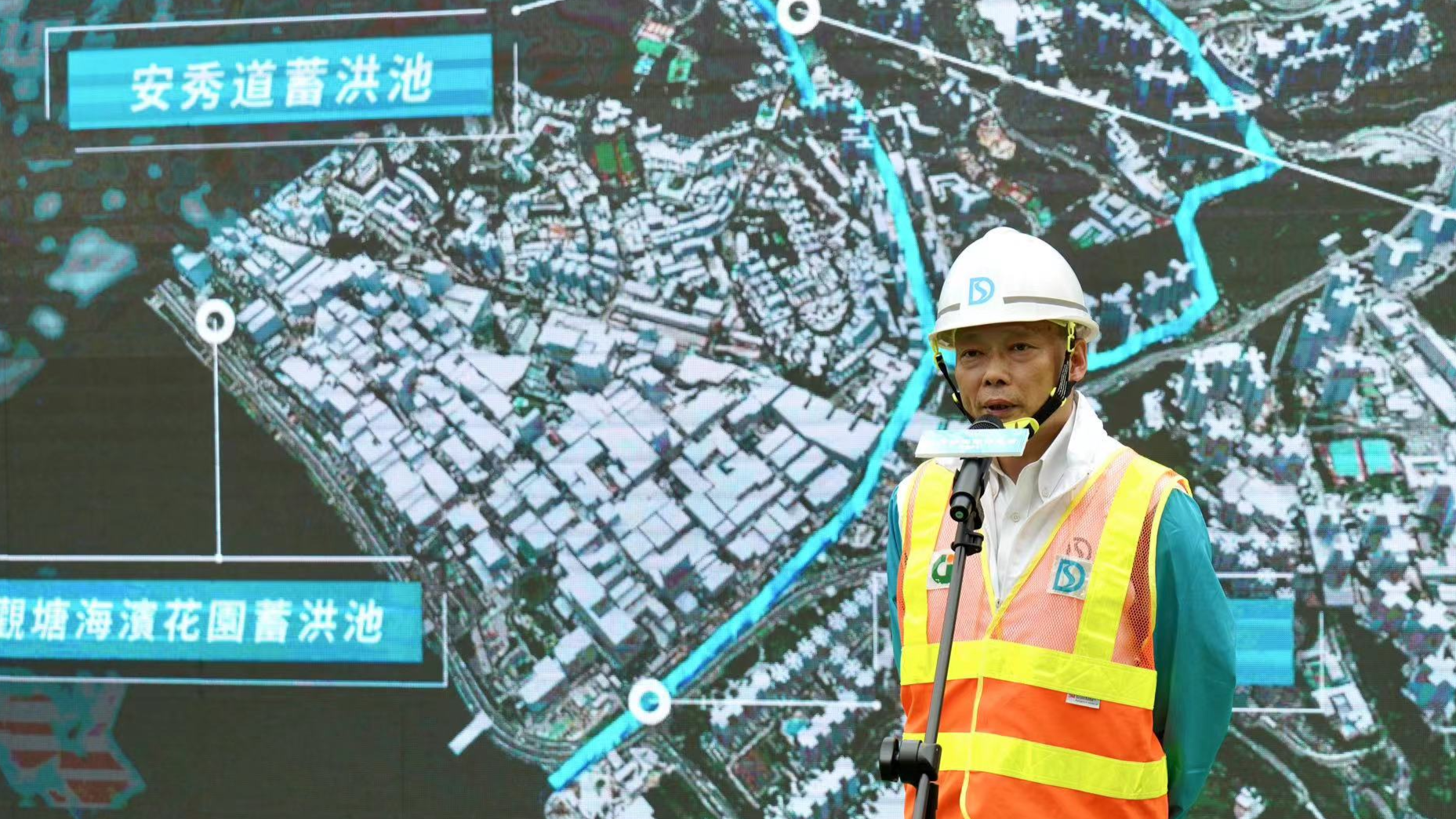
The Drainage Services Department said on Thursday that it has upgraded emergency-response plans and deployed more equipment such as water-level sensors and pipe-inspection robots to cope with the upcoming typhoon season.
At a news conference on Thursday, Director of Drainage Services Ringo Mok Wing-cheong said extreme weather has become more common in recent years, requiring the government to improve work related to preparation, early warnings, emergency responses and recovery.
Mok said last year’s heavy rain prompted the government to optimize emergency-response plans. He said the government has examined the operation of emergency coordination centers, and the number of emergency-response teams has been increased to 160. The enhanced arrangement worked well during the hoisting of the red rainstorm signals on May 4 and 21.
He added that the department has carried out 120 minor improvement projects across the city in areas with high flooding risks over the past few months to enhance the city’s draining capability.
In addition, 11 major stormwater drainage improvement works, including the construction of stormwater drains and underground stormwater storage tanks, are expected to be completed in phases by 2030.
Mok introduced new flood-prevention technology applications, including LeMonSwitch, a sensor that has been installed at 90 manholes for monitoring sewage overflow.
Another such technology is the spherical Tumbler Inspection Ball — a surveying robot offering stable 360-degree panoramic videos — which can stay upright as it dives down pipes and tunnels, even under rapid-flow conditions. The department compares the robot, which checks the condition of pipelines, to a Chinese budaoweng — a roly-poly toy that rights itself after being tipped over — as the robot can take good videos regardless of how it tilts.
A smart flood prevention system has been deployed by the department since mid-2023 alongside the Shing Mun River to alert members of the public on flooding risks. The system provides information of water levels, weather, tides and flooding warning signals displaying on screens and accessed by QR codes.

The department also briefed reporters on the construction process of the stormwater storage tank beneath the Sau Nga Road Playground in Kwun Tong during a site visit.
The 64,000-cubic-meter tank, costing HK$938.3 million ($120.2 million), is expected to be completed in 2028.
Constructors have built a 3D model of the tank to help them assess safety of the constriction and boost efficiency, according to the department.
Employees also use augmented-reality technologies to simulate what the tank will look like after completion to better understand the construction procedures and conditions of each process.
An artificial-intelligence-powered system has been used to monitor the situation of dump tracks to keep them from polluting the surrounding environment with dust and dirt.
Apart from addressing the threat of flooding, the system will also provide more recreational spaces to achieve the concept of “single site, multiple uses”, the department said.
stephyzhang@chinadailyhk.com


